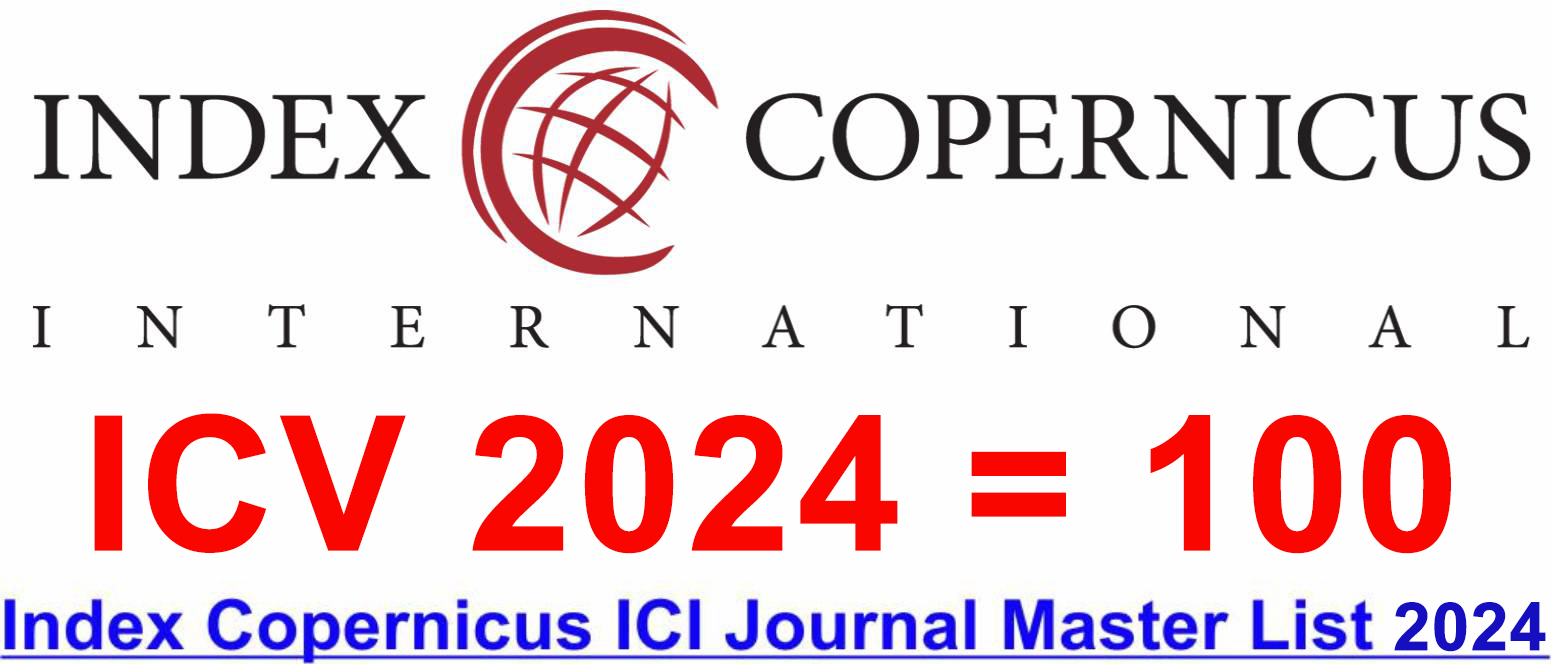A Comparative Analysis and Prediction of Ovarian Cancer using AI Approach
DOI:
https://doi.org/10.46977/apjmt.2023.v03i03.003Keywords:
Artificial Intelligence (AI), Ovarian Cancer, Decision Tree, ID3 Algorithm, PrologAbstract
The aim of this paper is to analyze and predict ovarian cancer in women using Artificial Intelligence. The program in logic and the decision tree of machine learning are being created to presume Ovarian Cancer. Ovarian malignancy is a significant infection among ladies, even at a very early age. The side effects of ovarian diseases are taken as the factors to settle on the choice tree to foresee the conceivable outcomes. The fundamental side effects would be the foundations of the sickness to settle on the choice tree furthermore than all the yes and no of the tree would have a determination or an outcome. This will assist the women to aware of the type of the ovarian cancer with symptoms and to take necessary steps to avoid this deadly disease. As per the research outcome, it is quite helpful for women all over the world to be aware of the disease. Analysis and prediction provide a major outcome of this research. Advanced technology helps move the health system in a new direction. It gives attention to ladies about ovarian malignancy from one side of the planet to the other. There are numerous country regions all around the world exists where the specialist and the patient proportion are poor, there it can furnish attention to ovarian malignancy alongside the expectation if any patient has ovarian disease or not. Any little or big indications of ovarian disease, they will become more acquainted with what sort of ovarian malignant growth they have through the product. It will decrease the mortality rate.
Downloads
References
Arora, T., Mullangi, S., & Lekkala, M. R. (2021). Ovarian Cancer. StatPearls. https://www.statpearls.com/ArticleLibrary/viewarticle/95586
Ashfaque, J.M. (2021). Ovary Cancer Data. https://kaggle.com/ukveteran/ovary-cancer-data
Barton, C. A., Clark, S. J., Hacker, N. F., & O’Brien, P. M. (2008). Epigenetic Markers of Ovarian Cancer. Ovarian Cancer, 35–51. https://doi.org/10.1007/978-0-387-68969-2_4
Berchuck, A., Schildkraut, J. M., Pearce, C. L., Chenevix-Trench, G., & Pharoah, P. D. (2008). Role of genetic polymorphisms in ovarian cancer susceptibility: development of an international ovarian cancer association consortium. Ovarian Cancer, 53-67. https://doi.org/10.1007/978-0-387-68969-2_5
Chien, J., & Poole, E. M. (2017). Ovarian cancer prevention, screening and early detection: Report from the 11th Biennial Ovarian Cancer Research Symposium. International Journal of Gynecological Cancer : Official Journal of the International Gynecological Cancer Society, 27(9), S20–S22. https://doi.org/10.1097/IGC.0000000000001118
Cleveland Clinic (2021). Ovarian Germ Cell Tumors: What is it, Causes, Symptoms & Treatment. https://my.clevelandclinic.org/health/articles/6186-ovarian-germ-cell-tumors
Das, S., Biswas, S., Paul, A., & Dey, A. (2018a). AI Doctor: An intelligent approach for medical diagnosis. In Industry interactive innovations in science, engineering and technology (pp. 173-183). Springer, Singapore. https://doi.org/10.1007/978-981-10-3953-9_17
Das, S., & Sanyal, M. K. (2020). Application of AI and soft computing in healthcare: a review and speculation. vol, 8, 21.
Das, S., Sanyal, M., Datta, D., & Biswas, A. (2018b). AISLDr: artificial intelligent self-learning doctor. In Intelligent engineering informatics (pp. 79-90). Springer, Singapore. https://doi.org/10.1007/978-981-10-7566-7_9
Das, S., & Sanyal, M. K. (2020). Machine intelligent diagnostic system (MIDs): an instance of medical diagnosis of tuberculosis. Neural Computing and Applications, 32(19), 15585-15595. https://doi.org/10.1007/s00521-020-04894-8
Das, S., Sanyal, M. K., & Datta, D. (2018, January). Advanced diagnosis of deadly diseases using regression and neural network. In Annual Convention of the Computer Society of India (pp. 330-351). Springer, Singapore. https://doi.org/10.1007/978-981-13-1343-1_29
Das, S., Sanyal, M. K., & Datta, D. (2019a, February). Intelligent approaches for the diagnosis of low back pain. In 2019 Amity international conference on artificial intelligence (AICAI) (pp. 684-695). IEEE. https://doi.org/10.1109/AICAI.2019.8701266
Das, S., Sanyal, M. K., & Datta, D. (2019b). Artificial Intelligent Embedded Doctor (AIEDr.): A Prospect of Low Back Pain Diagnosis. International Journal of Big Data and Analytics in Healthcare (IJBDAH), 4(2), 34-56. https://doi.org/10.4018/IJBDAH.2019070103
Das, S., Sanyal, M. K., & Datta, D. (2021). A Comprehensive Feature Selection Approach for Machine Learning. International Journal of Distributed Artificial Intelligence (IJDAI), 13(2), 13-26. https://doi.org/10.4018/IJDAI.2021070102
Das, S., Sanyal, M. K., & Kumar Upadhyay, S. (2020). A comparative study for prediction of heart diseases using machine learning. Proceedings of Industry Interactive Innovations in Science, Engineering & Technology (I3SET2K19). https://doi.org/10.2139/ssrn.3526776
Das, S., Synyal, M. K., Upadhyay, S. K., & Chatterjee, S. (2021, February). An Intelligent Approach for Predicting Emotion Using Convolution Neural Network. In Journal of Physics: Conference Series. 1797(1) 012014. IOP Publishing. https://doi.org/10.1088/1742-6596/1797/1/012014
Dixon, W. G., Beukenhorst, A. L., Yimer, B. B., Cook, L., Gasparrini, A., El-Hay, T., Hellman, B., James, B., Vicedo-Cabrera, A. M., Maclure, M., Silva, R., Ainsworth, J., Pisaniello, H. L., House, T., Lunt, M., Gamble, C., Sanders, C., Schultz, D. M., Sergeant, J. C., & McBeth, J. (2019). How the weather affects the pain of citizen scientists using a smartphone app. Npj Digital Medicine, 2(1), 105. https://doi.org/10.1038/s41746-019-0180-3
Elavarasu, S., Vinod, V., & Elangovan, E. (2017). Machine Learning Applications in Ovarian Cancer Prediction: A Review. International Journal of Pure and Applied Mathematics, 117(20), 853-860.
Kasture, K. R., & Al, E. (2021). A New Deep Learning method for Automatic Ovarian Cancer Prediction & Subtype classification. Turkish Journal of Computer and Mathematics Education (TURCOMAT), 12(12), Article 12.
Kawakami, E., Tabata, J., Yanaihara, N., Ishikawa, T., Koseki, K., Iida, Y., Saito, M., Komazaki, H., Shapiro, J. S., Goto, C., Akiyama, Y., Saito, R., Saito, M., Takano, H., Yamada, K., & Okamoto, A. (2019). Application of Artificial Intelligence for Preoperative Diagnostic and Prognostic Prediction in Epithelial Ovarian Cancer Based on Blood Biomarkers. Clinical Cancer Research, 25(10), 3006–3015. https://doi.org/10.1158/1078-0432.CCR-18-3378
Laios, A., Gryparis, A., DeJong, D., Hutson, R., Theophilou, G., & Leach, C. (2020). Predicting complete cytoreduction for advanced ovarian cancer patients using nearest-neighbor models. Journal of Ovarian Research, 13(1), 117. https://doi.org/10.1186/s13048-020-00700-0
Matulonis, U. A., Sood, A. K., Fallowfield, L., Howitt, B. E., Sehouli, J., & Karlan, B. Y. (2016). Ovarian cancer. Nature Reviews Disease Primers, 2(1), 16061. https://doi.org/10.1038/nrdp.2016.61
Mayo Clinic. (2021a). Ovarian cancer—Symptoms and causes. https://www.mayoclinic.org/diseases-conditions/ovarian-cancer/symptoms-causes/syc-20375941
Mayo Clinic. (2021b). Ovarian cysts—Symptoms and causes. https://www.mayoclinic.org/diseases-conditions/ovarian-cysts/symptoms-causes/syc-20353405
OCRA (2021). Types of Ovarian Cancer. Ovarian Cancer Research Alliance. https://ocrahope.org/patients/about-ovarian-cancer/types-ovarian-cancer/
Osmanović, A., Abdel-Ilah, L., Hodzic, A., Kevric, J., & Fojnica, A. (2017). Ovary Cancer Detection using Decision Tree Classifiers based on Historical Data of Ovary Cancer Patients. 503–510. https://doi.org/10.1007/978-981-10-4166-2_77
CTCA (8th October 2018). Ovarian cancer types: Common, Rare and More. Cancer Treatment Centers of America. https://www.cancercenter.com/cancer-types/ovarian-cancer/types
Seidman, J. D., Horkayne-Szakaly, I., Haiba, M., Boice, C. R., Kurman, R. J., & Ronnett, B. M. (2004). The Histologic Type and Stage Distribution of Ovarian Carcinomas of Surface Epithelial Origin. International Journal of Gynecological Pathology, 23(1), 41–44. https://doi.org/10.1097/01.pgp.0000101080.35393.16
Stewart, L., Garg, R., Garcia, R., & Swisher, E. (2016). Small cell ovarian carcinoma: Long term survival in juvenile case with poor prognostic features. Gynecologic Oncology Reports, 18, 45–48. https://doi.org/10.1016/j.gore.2016.11.002
Tan, D. S., Ang, J. E., & Kaye, S. B. (2008). Ovarian cancer: can we reverse drug resistance?. Ovarian Cancer, 153-167. https://doi.org/10.1007/978-0-387-68969-2_13
Zhang, M., Zhuang, G., Sun, X., Shen, Y., Zhao, A., & Di, W. (2015). Risk prediction model for epithelial ovarian cancer using molecular markers and clinical characteristics. Journal of Ovarian Research, 8(1), 67. https://doi.org/10.1186/s13048-015-0195-6
Published
How to Cite
Issue
Section
Copyright (c) 2023 Asia-Pacific Journal of Management and Technology (AJMT)

This work is licensed under a Creative Commons Attribution-NonCommercial 4.0 International License.
















